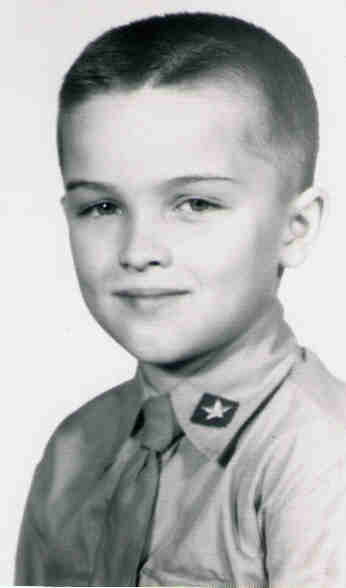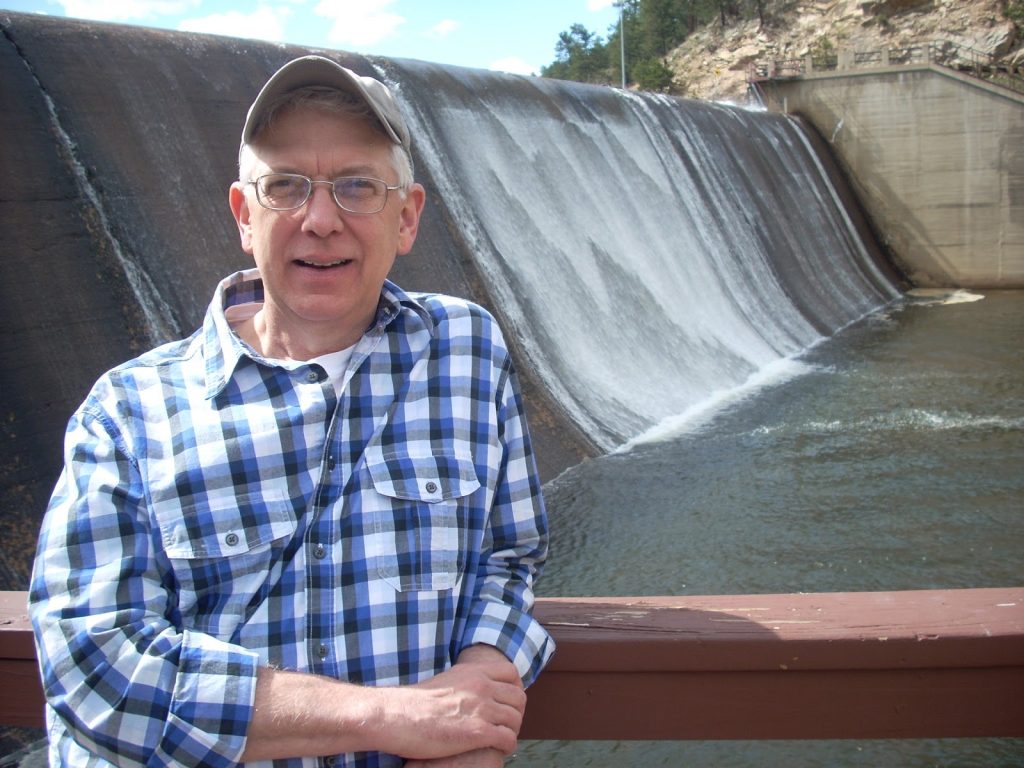Telling Your Story group, while visiting my brother and sister at South Lake
Tahoe (SLT), California. My brother had been
diagnosed with an aggressive form of prostate cancer and had driven from his
home in Oregon back to SLT to visit our sister.
While there he became so ill that he could not return to Oregon so I
also stayed throughout the summer until his end.
when I reached 16, driving myself in either my or my family’s car. Once each year during Christmas school
vacation, however, I got to ride Greyhound buses to and from my father’s home
in Torrance, California (a suburb of the Los Angeles metro area) so he could
have his one-week visitation rights.
Those trips occurred from my age of 10 through 18 when I left home for
college.
Nevada, I always dreaded the 5 to 6 hour wait until I discovered the Nevada
State Museum. Eventually as the years
passed, I managed to see all the exhibits (and I even started reading the signs
telling about the stuffed animal dioramas).
I learned a lot about “things” during those years from visiting the
museum. My favorite exhibits were right
at the entrance; the history of and silver service from the USS Nevada
battleship, ultimately used during the hydrogen bomb test at the Bikini Atoll
in the South Pacific. It had various
animals on it to represent human crewmen.
My other favorites were the displayed collection of Silver Dollars and
Gold Coins minted in the Carson City Mint and at the official exit in the
basement, the mock-up of an underground silver mine.
California, I was usually involved in reading a book specially purchased for
the trip. Once, when I was 16 a slightly
overweight girl my age sat by me for the whole trip. She was going home to Venice (another suburb
of Los Angeles) and very talkative and all I wanted to do was read but, since I
am often too polite for my preferences, I talked with her until she got sleepy
and then I read. Once close to Los
Angeles “we” decided that I would pick her up for a date in two days. My dad loaned me his car and we went to
Pacific Ocean Park (sort of a carnival with rides built on a pier over the
ocean at Venice). We had fun there. I took her home and walked her to the door
but we did not kiss and I never saw her again.
Greyhound was my favorite mode of transportation. While buses played a major and positive part
in my youth, my recent 24-hour bus ride from Denver to Reno definitely removed
any “romantic” attachment buses had as a result of my youthful memories, so it
is not my favorite.
riding with my dad during his 30-days each summer visitation time. He would pick me up at Lake Tahoe and we
would then travel to Minnesota, Iowa, and points in between during the days the
interstate highway system was just beginning to be constructed. One year on our way to Minnesota, we went to
Mt. Rushmore first and traveled on a portion of I-90 in Rapid City, South
Dakota. I had my learner’s permit then,
so I was driving at that point.
about sleep and dreams. On one very warm
(no auto air conditioner) day, I was dozing or perhaps actually sleeping. I was actively dreaming about being in a WW1
trench with other soldiers. Apparently,
I was the commander because I began to give my men a “going-over-the-top”
pre-attack motivational speech. During
the speech I started to sing and everyone joined in. We were singing “San Antonio Rose”. After a couple of choruses, there was an
artillery blast that roused me a bit and I felt my dad shaking my leg and heard
him tell me to wake up. As I woke, I
heard “San Antonio Rose” playing on the car radio. So it is possible to hear the real world
while dreaming and incorporate it into the dream world. This is not unlike dreaming of using the
bathroom and waking up to find out you have either wet the bed or are about to,
if you don’t hurry.
artillery blast turned out to be the result of a large goose that did not move
out of the car’s way in time and had hit the windshield in front of me. Unfortunately, the goose’s neck and head got
stuck between the windshield and the exterior “visor” overhanging the
windshield on that model of car (possibly a ’55 Studebaker). Dad made me go pull it out so we could
continue. Yuck!!
I have always enjoyed “road trips” because of my yearly travels with my father,
it is not my favorite mode of transportation; most common, yes.
first experience flying was just before I turned 8. My parents had decided to send me to live
with my mother’s parents on a farm in Minnesota while they obtained a
divorce. I didn’t learn about the divorce
until age 9 ½. Since that time, I’ve
flown a lot on personal, union, and military business. Once on the way back from visiting my father
in Los Angeles, the plane I was on almost was involved in a mid-air
collision. That particular experience of
violent turning and climbing and turning again put a solid fear of flying into
my conscious and subconscious. So, now
days I’m am always tense while flying.
As you should expect by now, flying is not my favorite mode of traveling
either.
age 13, my parents decided to take a late summer vacation to the farm in
Minnesota. So, after packing us all
roast buffalo sandwiches for the trip, we left Reno for Des Moines, Iowa where
we needed to change to a northbound train.
When we reached Ogden from Reno, the train was to be stopped for
20-minutes. My parents went to get
coffee and left me with my 2 ½ year old twin brother and sister on the
train. About 10-minutes after they left,
the train began to move and I went into major panic mode. “Where are they?” “Are they leaving us, like
mom did when they sent me to the farm when I was 8?” “How am I going to care
for two babies?” “Can I stop the train somehow?” Those are the questions that started racing
through my mind, repeatedly. I don’t
know why or how, but I didn’t cry. I
think I wanted to.
it turned out all the railroad did was move the train to a different track a
bit beyond where they had stopped originally.
About three minutes prior to the expiration of the 20-minute stop, my
parents were back on the train with us.
Contrary to all the TV ads, “relief” is not spelled “Rolaids” it is
spelled “let-me-give-you-both-lots-of-hugs-and-tears-of-joy.”
returned from that vacation 1 ½ weeks after school started. I was starting 8th grade. My first day of school was Thursday. My teacher, Mr. Ross, gave me my books and
assigned me a desk. Just before the
final bell rang for the end of the day, he announced that there would be a test
on the first 3 chapters in our social studies book the next day. He told me just do the best I can.
did some panic stricken cramming that night and the next morning and took the
test. On the Monday following, he was
upset with the class because they had done so poorly on the test. Then he did the unthinkable. He told the class that I had only one night
to prepare and they had nearly two weeks; then said that I had scored the
highest in the class by a lot (like an 86 or something). That statement fixed my reputation as a DAR
(Darn Average Raiser) and my classmates were slow to become friendly and the
reputation (much undeserved in my mind) continued through grade 12. In college the real truth was revealed.
transportation is not fast in the west and central parts of the country, but it
is very stress free and relaxing (unless you start school late). Yet, it is still not my favorite mode of transportation.
favorite method of transportation is books!
Reading books can transport one to places that cannot be reached by
planes, trains, buses, or automobiles. I
love to lose myself (and problems) in a good stories contained in books. Television and movies are often stories first
told in books. Books have the benefit of
taking longer to finish and can easily be taken off the shelf and
revisited. Books contain adventures and
knowledge without end.
cliché states, “A picture is worth a thousand words.” This submission to our storytelling group is
1579 words long. So, you should have a
decent image of me in your minds, in case you all have forgotten what I look
like. I will be back soon.
Lawndale and then in Redondo Beach. Just
prior to turning 8 years old in 1956, I began living with my grandparents on
their farm in Isanti County, Minnesota for two years during which time my
parents divorced.
in 1958, I lived first at Emerald Bay and then at South Lake Tahoe, California,
graduating from South Tahoe High School in 1966. After three tours of duty with the Air Force,
I moved to Denver, Colorado where I lived with my wife and four children until
her passing away from complications of breast cancer four days after the 9-11
terrorist attack.
therapeutic.

